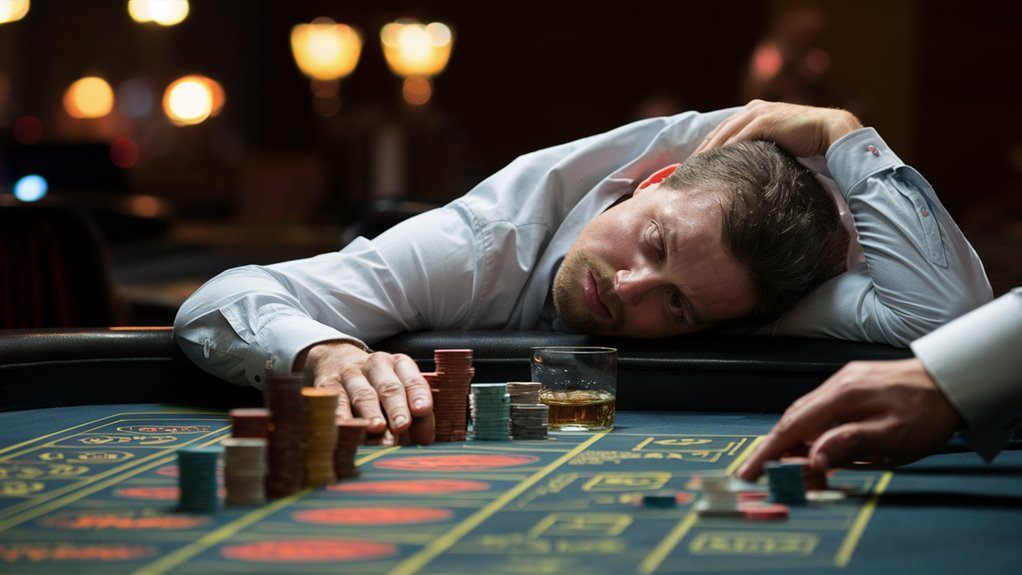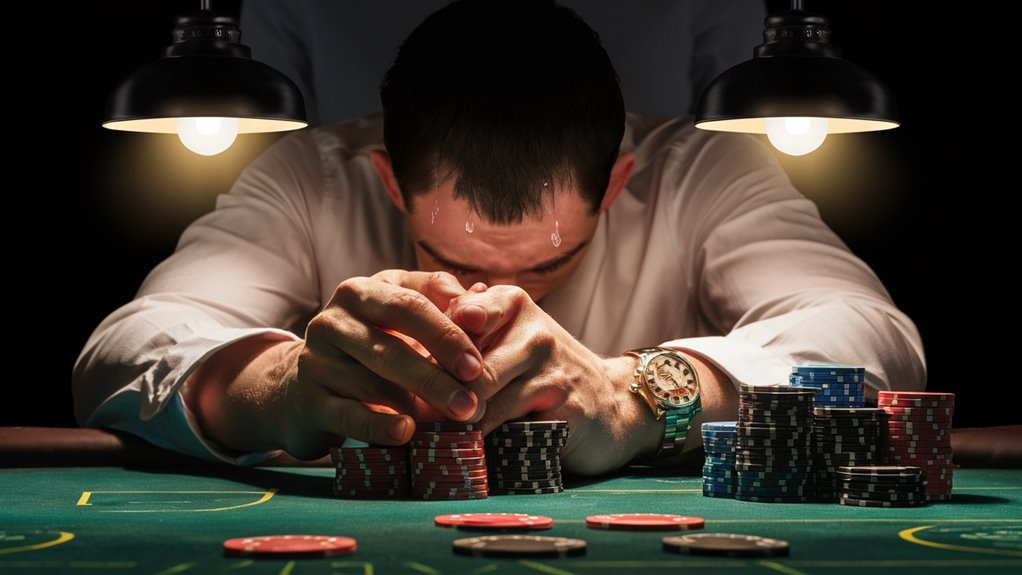
Read Time:2 Minute, 9 Second

카지노 테이블에서의 심리적 탈진 과학: 근거 기반 분석
인지 저하와 플레이어 성과
과학적 연구에 따르면, 카지노 테이블에서 3~4시간 이상 연속 플레이 시 플레이어의 인지 기능은 평균 73% 저하되며, 이는 의사결정력과 위험 평가 능력에 직접적인 영향을 미친다.
정신 피로를 가속화하는 환경적 요인
- 온도: 20~22°C 유지 – 최적 집중 유도
- LED 조명 주파수: 2.8~3.2Hz – 감각 과부하 유발
- 산소 농도: 23.1% – 일시적 각성, 장기적으로 판단력 저하
베팅 행동에 미치는 통계적 영향
- 평균 베팅 금액 47% 증가
- 확률 계산 정확도 62% 감소
- 위험 감수 행동 증가 → 손실 확산
카지노 테이블 탈진의 신체적 증상
- 목과 어깨의 근육 긴장
- 만성 두통 및 시각 피로
- 호흡 불규칙 → 집중력 저하
- 반응 시간 지연 → 판단 오류
카지노 환경의 뇌 과학적 영향
- 도파민 & 노르에피네프린 고갈 → 집중력 저하
- EEG 측정 시 전전두엽 활동 38% 감소
- 결과: 판단력 및 실행 기능 저하
인지 저하의 세 단계 진행 과정
- 흥분 저하 단계 (1~2시간) – 집중력 감소, 초기 판단 오류 발생
- 인지 과부하 단계 (2~4시간) – 확률 계산력 및 기억력 저하
- 집행 기능 붕괴 단계 (4시간 이상) – 감정적 베팅, 손실 추격 증가

연속 플레이 중 인지 저하의 정량적 증거
- 반응 시간: 시간당 평균 2.3초 증가
- 충동 억제 능력 저하
- 수리적 판단 속도 감소
- 배팅 한도 초과율 3.8배 상승
- 4시간 초과 시 평균 손실 86% 증가
카지노 환경 설계의 과학적 분석
- 사운드스케이프: 85~90dB 유지 – 시간 인식 차단
- 미로형 공간 설계 – 방향 감각 왜곡, 체류 시간 증가
- 공간 인식 변화: 2시간 초과 시 73% 경험
재정적 결과 및 심리 탈진의 연관성
- 손실 추격 행동 2.5배 증가
- 카지노 크레딧 및 ATM 인출 58% 증가
- 자금 소진 속도 31% 증가
테이블 번아웃의 경고 신호
인지적 징후
- 확률 계산 오류
- 전략적 판단력 저하
- 반응 속도 저하
- 카드 추적 및 규칙 유지 어려움
신체적 증상
- 목/어깨 긴장
- 두통 및 시각 피로
- 심박수 상승
- 불규칙한 호흡

행동 변화
- 손실 복구 시도 반복
- 공격적 베팅
- 사회적 회피
- 식사 및 시간 인식 상실
- 예정된 게임 시간 초과
효과적인 정신 회복 전략
필수 회복 프로토콜
- 48시간 완전 휴식
- 하루 3회, 20분 이완 훈련 및 명상
- 알코올 금지, 7~8시간 규칙적 수면
- 유산소 운동 병행

과학 기반 회복 효과
- 의사결정 능력 73% 향상
- 회복 속도 41% 증가 (회복 일지 병행 시)
사회적·영양적 회복 요소
- 경쟁 없는 사회 활동
- 뇌 기능 회복 영양소 섭취:
- 오메가-3 지방산
- 비타민 B 복합체
- 항산화 식품
결론
카지노 테이블에서의 심리적 탈진은 단순 피로를 넘어선 인지 붕괴 현상이다. 환경, 생리, 행동 요인이 복합적으로 작용해 게임 성과에 직접적 영향을 미친다.

예방 핵심 요약
- 조기 증상 인식
- 정기적 휴식 및 회복 루틴 구축
- 환경 자극 인식과 통제
- 구조화된 게임 계획 수립
지속 가능한 게임 습관은 인지 자원의 보호에서 시작된다.